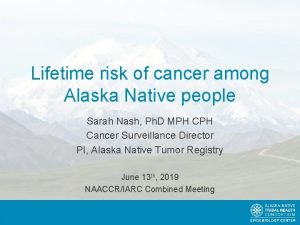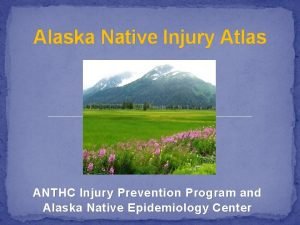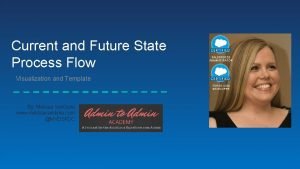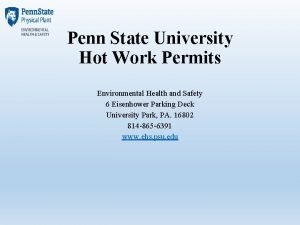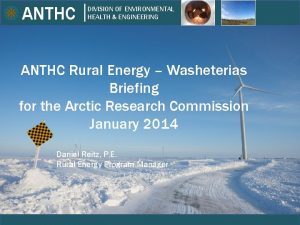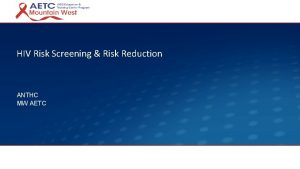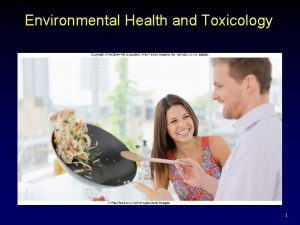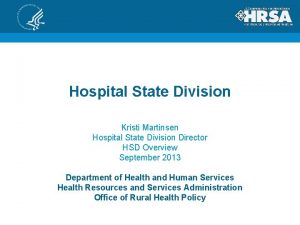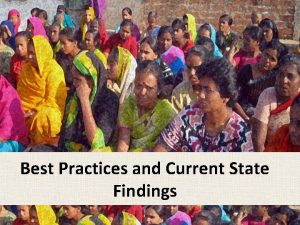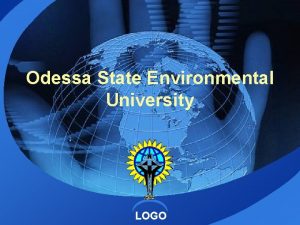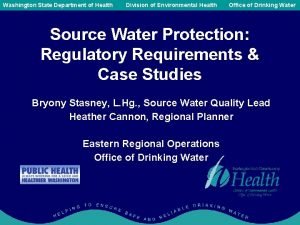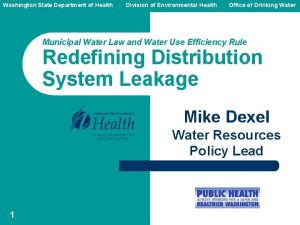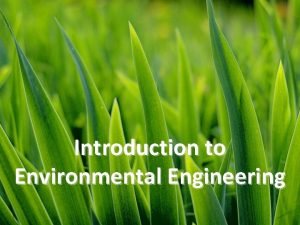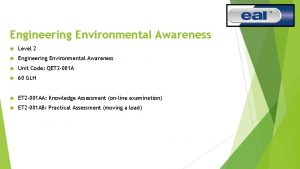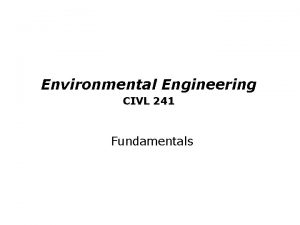ANTHC DIVISION OF ENVIRONMENTAL HEALTH ENGINEERING Current State



















- Slides: 19

ANTHC DIVISION OF ENVIRONMENTAL HEALTH & ENGINEERING Current State of Wastewater Treatment and Disposal in Alaska 5 th Annual Water and Sanitation Workshop January 2015

Sources of Wastewater • Domestic (Sanitary) – Piped – Hauled or Honey-bucket • Industrial • Infiltration and Inflow • Combined Sewers Kiana Lagoon Cell

Treatment Objectives • Identify contaminants of concern. • Effectively remove identified contaminants. • Return effluent to the natural water bodies or the land. • Dispose of Contaminants. • Do so in a manner that protects the environment and human health. • Do so in a sustainable manner.

Contaminants of Concern • Suspended Solids: When unremoved, lead to sludge deposits and anaerobic conditions in the aquatic environment. • Biodegradable Organics: If discharged untreated, leads to depletion of natural oxygen in the receiving waters. • Pathogens: Diseases can be transmitted via pathogens in wastewater. • Nutrients: Nitrogen and phosphorus can lead to growth of undesirable aquatic life. • Heavy Metals: Usually added in industrial or commercial processes. • Priority Pollutants: Other contaminants selected for removal based on known carcinogenicity or toxicity.

Wastewater Treatment Stages • Primary Treatment: Physical Treatment (screening, settling, floating) • Secondary Treatment: Biological and/or chemical processes to remove organic matter, suspended solids, and pathogens. • Tertiary Treatment: Chemical and biological treatment for targeted contaminants. • Effluent Disposal: Consistent with receiving body water quality standards. • Sludge Disposal: Often misjudged level of effort – significant challenge. Naknek Lagoon Cell

Governing Regulations • Clean Water Act of 1972 o Defines Minimum Requirements (Secondary Treatment) § Maximum Effluent Contaminant Levels – Total Suspended Solids (TSS): 30 mg/l – Bio-chemical Oxygen Demand (BOD): 30 mg/l – Chloroform Bacteria (# colonies / 100 ml) • Minimum Removal Requirements (%). o Establishes National Pollution Discharge Elimination System (NPDES) Program o Secondary Treatment Exceptions

Common Treatment Systems in Alaska • Mechanical Plants • Settling Tanks / Ocean Outfalls. • Facultative Ponds (Lagoons) Hoonah Bio-reactor Angoon abandoned RBC

Mechanical Treatment Systems • Description: Natural treatment mechanisms optimized in a controlled environment. Tight control the parameters necessary for optimum micro-organism growth. • Treatment Level: Up to Tertiary Hoonah Bar Screen Klawock Rotating Drum Screen

Mechanical Treatment Systems

Mechanical Treatment Systems • Advantages: – Lower Capital Cost – High Loading Rate/Smaller Footprint – Consistent Effluent (with good O&M control) • Disadvantages: – – Highest O&M Costs Highest operator cert. requirements Daily O&M required Continuous removal of sludge. Hoonah WWTP

Settling Tank/Outfall Systems • Description: Large tanks in series provide primary treatment prior to effluent disposal via an ocean outfall. • Treatment Level: Primary Tyonek Settling Tanks Tyonek Ocean Outfall

Settling Tank/Outfall Systems • Advantages: – Low capital cost – Lower operator cert. requirements – Periodic sludge removal and handling • Disadvantages: – – Primary treatment only Suitable only for small communities Requires sludge pumping equipment Requires long outfall construction Angoon Settling Tanks

Wastewater Treatment Ponds • Description: Shallow ponds used to treat wastewater through natural processes. – Tundra ponds – Constructed single and multi-cell facultative lagoons – Aerated Lagoons • Treatment Level: Typically Secondary • Cold Climate Considerations: Biological treatment achieved only in the summer.

Wastewater Treatment Ponds • Advantages: – – – Lowest O&M cost Lower operator cert. requirements Infrequent discharge Sludge storage in the cells Secondary treatment • Disadvantages: – – – Potentially highest capital cost Very large foot print Large volume annual/bi-annual discharges Separation requirements Inconsistent treatment Kwethluk Lagoon

Wastewater Systems in All Rural Alaska Communities (238 Communities with a combined population of 109, 652) Other 3 communities Wastewater Treatment Plant/Outfall Community Septic Tank/Drain Field 13 communities Individual Systems Lagoon 116

Wastewater Systems in Rural Communities with a Pop > 1, 000 (20 Communities with a combined population of 49, 393) Wastewater Treatment Plant/Outfall Lagoon 7 Communities 9 Communities (45%) Individual Systems 3 Communities

Wastewater Systems in Unserved* Communities (34 Communities with a Combined Population of 6, 353) None Community Septic Tank/ Drain Field 4 Communities (12%) Lagoon 26 Communities (76%) *A community is considered “unserved” if 55% or less of the homes in the community have a piped, septic tank & well, or covered haul system.

For More Information: Don Antrobus, PE Director of Design ANTHC, DEHE 907 -729 -3544 dantrobus@anthc. org

 Anthc epicenter
Anthc epicenter Anthc epicenter
Anthc epicenter Current state vs future state slide
Current state vs future state slide Ehs psu
Ehs psu Line current and phase current
Line current and phase current Line current and phase current
Line current and phase current Drift current and diffusion current in semiconductor
Drift current and diffusion current in semiconductor Ac theory 3 lesson 4
Ac theory 3 lesson 4 Drift current and diffusion current
Drift current and diffusion current Drift current and diffusion current
Drift current and diffusion current Q point
Q point Balanced delta delta connection
Balanced delta delta connection Infineon
Infineon Drift current and diffusion current in semiconductor
Drift current and diffusion current in semiconductor Why must the electrode holder be correctly sized
Why must the electrode holder be correctly sized Touch current vs leakage current
Touch current vs leakage current Mesh current method with current source
Mesh current method with current source Wireless health
Wireless health Current division
Current division Short division vs long division
Short division vs long division
